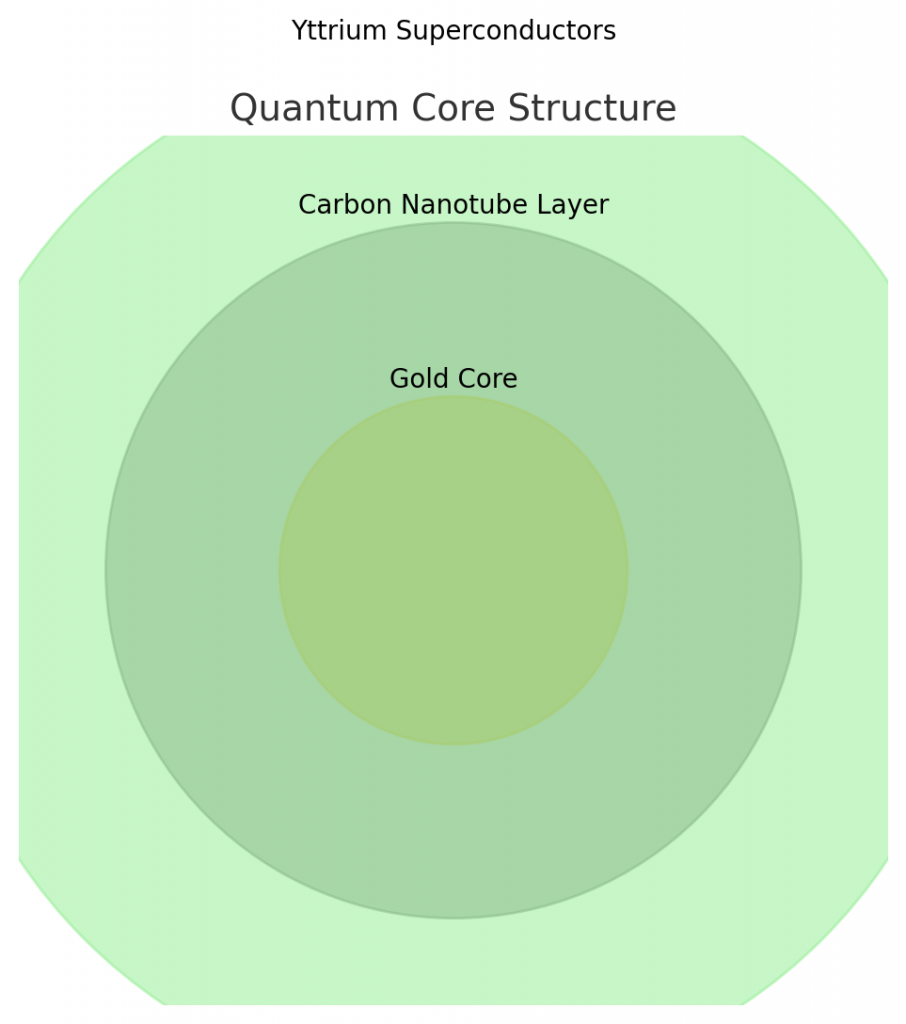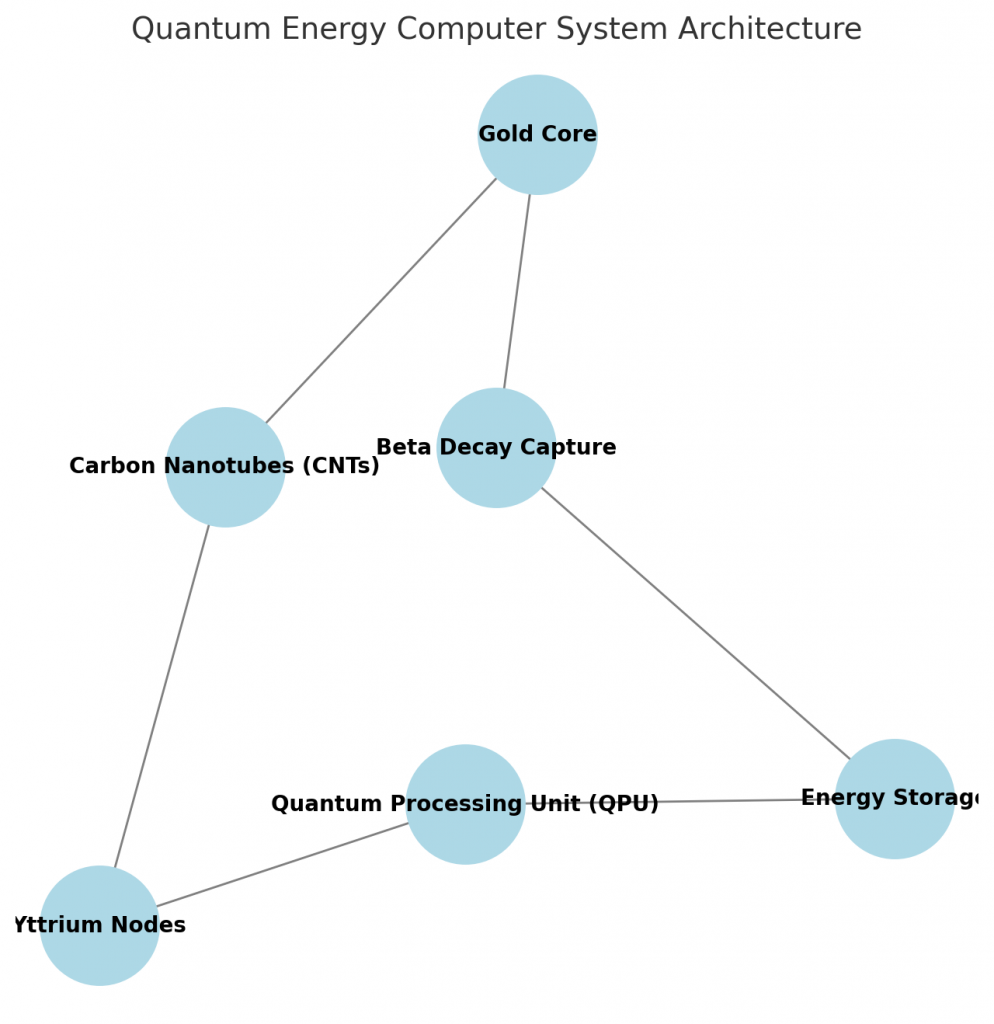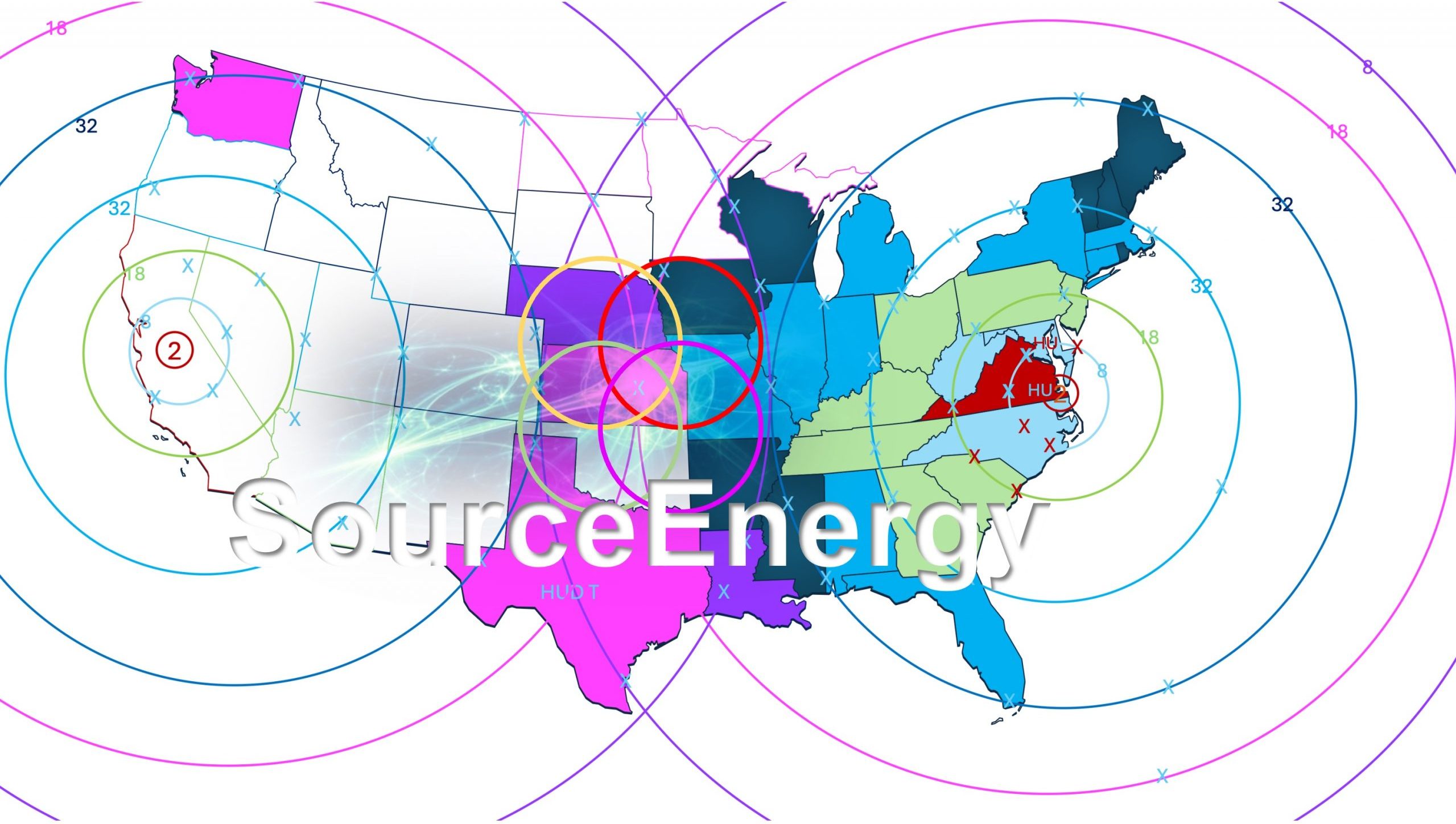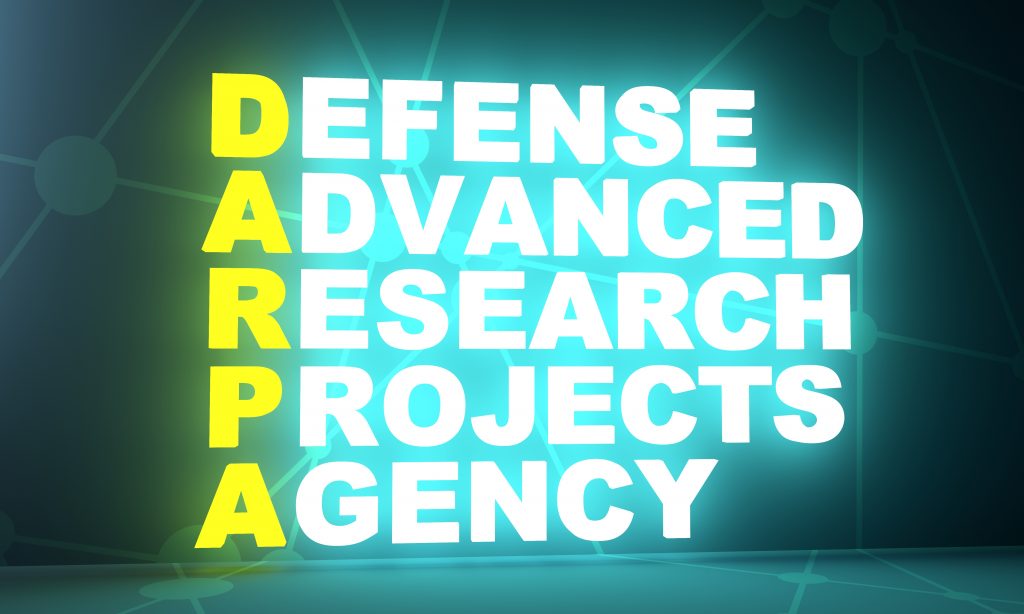Technical Report: Quantum Energy Computer Using Carbon Nanotubes, Gold, and Yttrium
Abstract
This report presents the design and conceptual framework of a quantum energy computer that integrates carbon nanotubes (CNTs), gold, and yttrium. The system leverages the unique properties of these materials to achieve quantum coherence, efficient energy transfer, and data processing. By combining neutron conversion with advanced nanostructures and superconducting elements, this quantum energy computer represents a transformative approach to renewable energy management, blockchain integration, and scientific computation. The design aligns with the principles of the Wealth Ecology Model, promoting scalable and sustainable technological advancement.
Introduction
Background
The increasing demand for efficient energy systems and advanced computation has driven innovation in quantum technologies. Carbon nanotubes, gold, and yttrium offer unique properties that can be harnessed to build a quantum energy computer capable of processing data and energy simultaneously. This design integrates neutron capture, beta decay energy harvesting, and quantum coherence into a unified system.
Objective
The goal of this project is to design a quantum energy computer that:
- Utilizes gold for neutron capture and energy conversion.
- Employs carbon nanotubes as the structural and conductive framework.
- Incorporates yttrium for superconductivity and stabilization.
Materials and Core Components
1. Carbon Nanotubes (CNTs)
- Properties:
- Exceptional electrical conductivity.
- High surface area for quantum interactions.
- Mechanical robustness for stable quantum structures.
- Role:
- Act as quantum circuits for energy and data transfer.
- Provide structural integrity to the computer.
2. Gold (Au)
- Properties:
- High atomic number for neutron capture.
- Stable electron shells ideal for maintaining quantum coherence.
- Role:
- Capture neutrons and convert them via beta decay.
- Stabilize quantum states in the system.
3. Yttrium (Y)
- Properties:
- Low-temperature superconductivity.
- Strong magnetic stabilization capabilities.
- Role:
- Facilitate superconductivity in the quantum circuits.
- Enhance coherence and energy efficiency.
System Architecture
1. Quantum Core


- Structure:
- Central gold core surrounded by a lattice of CNTs.
- Yttrium nodes integrated within the lattice.
- Functionality:
- Gold core captures neutrons, releasing beta decay energy.
- CNTs transport energy and stabilize quantum coherence.
- Yttrium nodes ensure superconductivity and minimal resistance.
2. Energy and Data Channels
- Design:
- CNT lattice embedded with gold nanoparticles.
- Channels configured for high-speed energy and data transfer.
- Functionality:
- Enable simultaneous quantum computation and energy distribution.
3. Superconducting Nodes
- Design:
- Yttrium superconductors placed at CNT junctions.
- Functionality:
- Maintain low resistance and stabilize quantum states.
4. Quantum Processing Unit (QPU)
- Design:
- Qubits encoded in electron spins and energy states within the CNT lattice.
- Quantum logic gates controlled by gold cores.
- Functionality:
- Perform quantum calculations using neutron-converted energy.
5. Energy Harvesting and Storage
- Design:
- Beta decay energy captured using piezoelectric materials.
- Energy stored in quantum capacitors embedded in the CNT framework.
- Functionality:
- Efficiently convert and store energy for system operation and external use.
Key Innovations
1. Neutron-Energy Conversion
- Gold cores enable neutron capture and conversion into beta decay energy.
- Energy is directly utilized for quantum processing.
2. Quantum Coherence via CNTs
- CNT lattice ensures high quantum coherence across the system.
- Facilitates simultaneous energy and data processing.
3. Superconductivity with Yttrium
- Yttrium nodes enhance energy efficiency and stabilize quantum states.
Applications
1. Renewable Energy Management
- Optimize energy flows in renewable energy grids.
- Enhance energy storage systems with quantum precision.
2. Blockchain Integration
- Enable secure blockchain computations.
- Power valuation mechanisms such as Source Coin with real-time quantum calculations.
3. Scientific Research
- Simulate complex quantum systems and energy interactions.
- Advance neutron conversion and quantum coherence studies.
4. Global Impact
- Deploy in underserved regions for energy management and computation.
- Promote equitable development aligned with the Wealth Ecology Model.
Implementation Steps
1. Simulation and Modeling
- Use quantum mechanical software (e.g., COMSOL, Qiskit) to simulate energy flows, coherence factors, and computation processes.
2. Prototype Development
- Synthesize CNTs and embed gold nanoparticles.
- Integrate yttrium superconductors into the CNT lattice.
3. Testing and Optimization
- Test neutron capture efficiency and beta decay energy conversion.
- Measure coherence and computation accuracy.
4. Scaling and Deployment
- Scale the design for industrial and community applications.
- Integrate with renewable energy and blockchain systems.
Conclusion
The quantum energy computer designed with carbon nanotubes, gold, and yttrium represents a significant leap in renewable energy management and quantum computation. By combining advanced materials and quantum coherence, this system aligns with the Wealth Ecology Model’s goals of scalability, sustainability, and equitable technological advancement. The next phase involves prototyping, testing, and scaling this transformative innovation.



